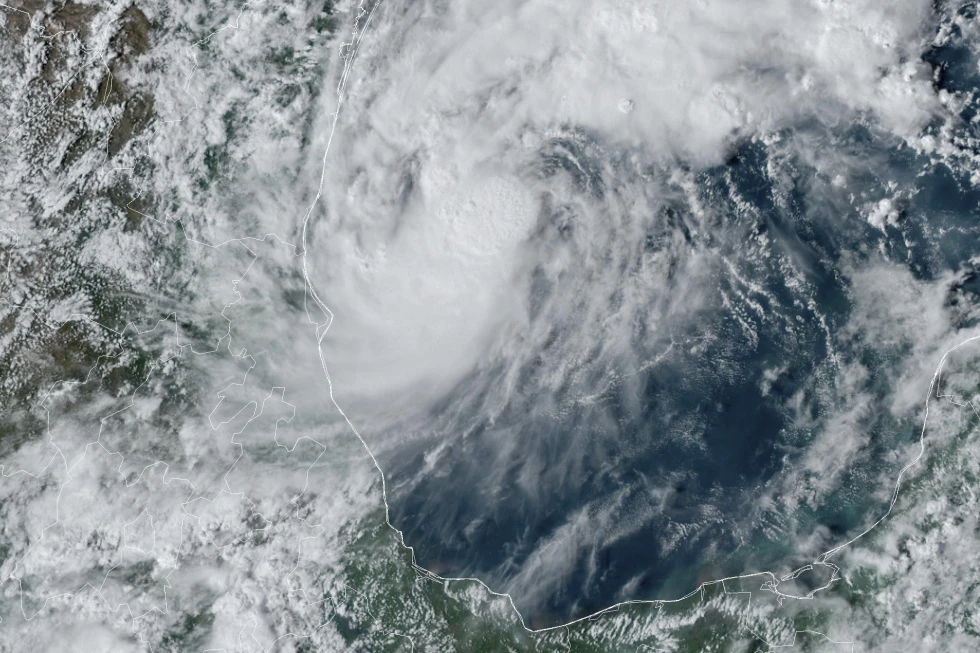
People across Florida were notified Sunday that Hurricane Milton is expected to intensify rapidly into a major hurricane before slamming midweek into the storm-ravaged Gulf Coast.
While forecast models vary widely, forecasters said the most likely path suggests Milton could make landfall Wednesday in the Tampa Bay area and remain a hurricane as it moves across central Florida into the Atlantic Ocean. That would largely spare other southeastern states ravaged by Hurricane Helene, which caused catastrophic damage from Florida into the Appalachian Mountains and a death toll that rose Sunday to 230 people.
Florida Gov. Ron DeSantis said Sunday that while it’s unknown where Milton will strike, it’s clear that Florida will be hit hard — “I don’t think there’s any scenario where we don’t have major impacts at this point.”
“You have time to prepare — all day today, all day Monday, probably all day Tuesday to be sure your hurricane preparedness plan is in place,” the Governor said. “If you’re on that west coast of Florida, barrier islands, just assume you’ll be asked to leave.”
The St. Petersburg-Tampa Bay area is still cleaning up extensive damage from Helene and its powerful storm surge. Twelve people perished as Helene swamped the coast, with the worst damage along the narrow, 20-mile (32-kilometer) string of barrier islands that stretch from St. Petersburg to Clearwater.
“I highly encourage you to evacuate” if you’re in an evacuation zone, said Kevin Guthrie, executive director of the Florida Division of Emergency Management. “We are preparing … for the largest evacuation that we have seen, most likely since 2017, Hurricane Irma.”
The state has prepared emergency fuel sources and EV charging stations along evacuation routes and “identified every possible location that can possibly house someone along those routes,” Guthrie said. He said that people who live in homes built after Florida strengthened its codes in 2004, who don’t depend on constant electricity, and who aren’t in evacuation zones should probably avoid the roads.
As Milton approaches, all classes and school activities in St. Petersburg’s Pinellas County are preemptively closed Monday through Wednesday. Tampa opened city garages for free so people could park their cars safely from the subsequent floodwaters.
DeSantis said as many as 4,000 National Guard troops are helping state crews remove debris, and he directed that Florida crews dispatched to North Carolina in Helene’s aftermath return to the state to prepare for Milton.
“All available state assets … are being marshaled to help remove debris,” DeSantis said. “We’re going 24/7 … it’s all hands on deck.”
FEMA Administrator Deanne Criswell defended her agency’s response to the Hurricane’s destruction after Republicans’ false claims, amplified by former President Donald Trump, created a frenzy of misinformation across devastated communities.
“This kind of rhetoric is not helpful to people, and it’s really a shame we’re putting politics ahead of helping people,” Criswell told ABC’s George Stephanopoulos. It’s created fear and mistrust among residents against the thousands of FEMA employees and volunteers on the ground across the southeast.
Despite this, Criswell said the agency is already preparing for Milton, well before it’s clear exactly where it will move across the Florida peninsula this week. “We’re working with the state there to understand what their requirements are going to be, so we can have those in place before it makes landfall,” she said.
U.S. Air Force hurricane hunters confirmed that Milton was centered about 815 miles (1,310 kilometers) west-southwest of Tampa Sunday afternoon, with maximum sustained winds of 80 mph (130 kmh), the hurricane center said.
The hurricane center said Mexico’s Yucatán Peninsula, the Florida Peninsula, the Florida Keys, and the northwestern Bahamas should monitor the system’s progress. Heavy rainfall was expected Sunday ahead of the storm itself and will likely combine with Milton’s rainfall to flood waterways and streets in Florida. Forecasters said up to a foot (30 centimeters) of rain could fall in places through Wednesday night.
Meanwhile, in the open Atlantic, Hurricane Kirk diminished to a Category 2 hurricane on Sunday, with top winds of 105 mph (165 kph), sending large swells and “life-threatening surf and rip current conditions” to Bermuda and northward along the U.S. and Canadian coasts, the center said. Hurricane Leslie was also moving over the Atlantic Ocean, well away from land, with top winds of 85 mph (140 kph).




One comment
THE SAGE "E"
October 6, 2024 at 6:59 pm
America be sure to get your Storm Information from a reliable source. The above ASS Press [FKA The Associated Press] artical is manipulatitave propaganda.
Thanks America,
THE SAGE “E”
Comments are closed.